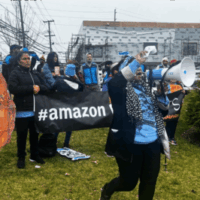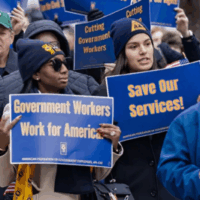Almost three years after fast-food workers first took to the streets nationwide calling for a $15 minimum wage, a wage board Gov. Andrew Cuomo appointed made New York the first state Wednesday to recommend a $15 minimum wage for fast-food workers.
When the measure moves forward — the state’s labor commissioner still has to approve it (and is expected to) — the increase will be phased in annually for fast-food chains with 30 locations or more, reaching $15 by late 2018 in New York City and statewide by 2021. It will raise pay from Brooklyn to the Great Lakes for one of the state’s lowest-paying sectors, and one that is dominated by profitable, multinational chains that can afford to do better for their workers.
What impact could this tremendous boost have for New York and the nation? Looking at recent developments, it is likely to spur employers across the state to begin to raise pay as well — creating momentum for further major wage increases both in the state and across the country.
In other cities and states, we have seen that when the minimum wage is raised for one group of employers and not others, it often creates an incentive for all employers to raise pay as they vie to recruit and retain the best workers.
The press has reported on this dynamic for years along the Washington-Idaho border, where — about a decade ago — Washington state’s minimum wage was about 50% higher than the minimum wage in neighboring Idaho. (It is about 31% higher as of 2015).
Rather than businesses leaving Washington, Idaho employers — such as fast-food chains — have raised their pay to compete as jobseekers gravitate toward the better-paying jobs.
The same trend was seen in Santa Fe, New Mexico, when in 2003 small businesses with fewer than 25 employees were exempted from the city’s minimum wage, which at $8.50 per hour was 65% higher than the state and federal minimum wage rate of $5.15 at the time.
Despite the exemption, small businesses in Santa Fe generally raised pay to stay competitive, as higher wages for some employers created momentum for higher pay across the city.
Over the next few years, the fast-food industry in New York will move to complete its transition to a $15 minimum wage. University of Massachusetts researchers and the Fiscal Policy Institute’s modeling shows that this reorientation is feasible without any reduction in employment levels, and with only very moderate adjustments — a less than 12% increase in the prices of fast-food items.
Nationally, in just a little over a year, the idea of the $15 minimum wage has gone from a rallying cry to public-policy reality in breakneck speed. Five cities — including Seattle, Los Angeles and San Francisco — have approved $15 wages in the last 18 months.
New York’s jump brings this movement to the state level, and will undoubtedly create momentum for other states and cities to act, as elected leaders compete for leadership in addressing income inequality.
In New York, the fast-food $15 wage is also a watershed in state policymaking. Gov. Cuomo stopped waiting for the Republican-controlled state Senate to end its knee-jerk opposition to higher wages. By using his executive powers, Cuomo sidestepped the Senate’s gridlock and showed leadership in taking strong action on wages and inequality.
After Cuomo’s success with wages for fast-food workers, grateful voters hope the governor will pivot to address other low-wage industries, and will continue to use his wage-board powers to make New York the first state in the nation to transition to a $15 minimum wage statewide.
Paul Sonn is the program director and general counsel for the National Employment Law Project, a national advocacy organization for employment rights of lower-wage workers.
Read the original piece at CNN.com.
Related to
The Latest News
All newsMayor Bowser & D.C. Council Must Respect the Will of D.C. Voters by Rejecting Repeal of Initiative 82

Blog
New Brief Sheds Light on the Amazon’s Dangerous ‘Flex’ Labor Model

News Release
NELP Denounces Supreme Court Ruling Permitting Immediate Layoffs of Hundreds of Thousands of Federal Workers

News Release
